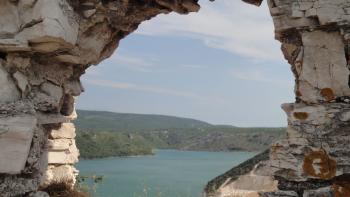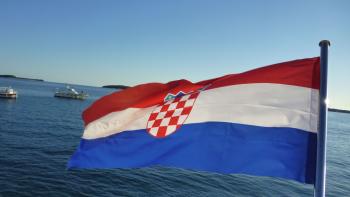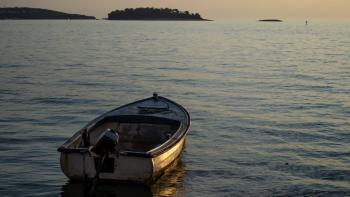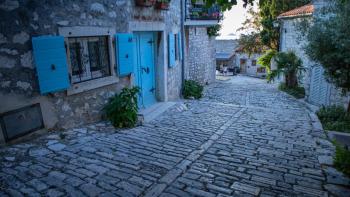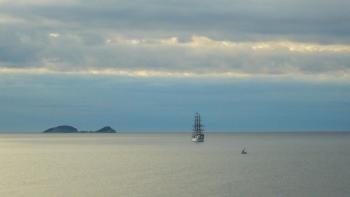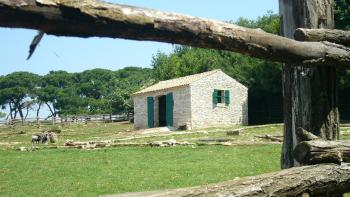
Real estate market in Croatia has completely recovered of crisis tendencies and was in a green PLUS zone throughout 2017. Global recession of 2008 hit Croatian realty market by price drop 25-50% in many areas. However since 2014 - 2015 it is demonstrating a steady enthusiastic growth. Croatia is celebrating already a third booming year of tourism followed by rise in residential construction and sales.
Popular Croatian resource Njuskalo renders the following statistical data on 2017 tendencies and results:
- generally real estate prices in Croatia rose in 2017 by 2,32%;
- the largest growth was demonstrated by Pula area where prices increased 11% with average price per m2 reaching 1485,00 eur;
- highest realty prices are still indicated in Dubrovnik with average price of 2494,00 eur per m2 for apartments and 2100,00 eur per m2 for houses;
- least popular areas are Osijek (as it is far from the sea) and Rijeka that had been overpriced for decades and it is now turning back to normal.
Crozilla, another noticeable web resource, fixed almost 14% rise in real estate prices for Dubrovnik in 2017, about 13% rise of prices in Split ,12,5% in Pula and 7% in Zadar. At the same time average prices in Opatija fell by 1% in comparison with 2016 (as mentioned before due to improper highly boosted prices).
Mostly demanded areas were the capital city of Zagreb (quite natural) and coastal Zadar (rather unexpected).
Apartments in Croatia were purchased mainly in Zagreb, Zadar, Split and Pula. Family houses were more popular as a property type to be purchased in 2017 in Sibenik, followed by Zadar. Land plots in Croatia attracted maximum buyers in Zagreb, Zadar, Krk and Porec.
Crozilla portal underlines difference between the price of m2 for apartments and houses. Houses in Dubrovnik and Porec are valued well higher than apartments as the market offers much less properties. In other areas like Opatija and Split flats are sold at higher prices per m2 than houses. This example is a bright proof that the market in 2017 was uneven and highly depending upon local supply and demand tendencies.
Growing at the seaside, inland realty prices continue to fall and the tendency will remain in future.
That is surprising but Crozilla and Njuskalo data are showing significant diversity in average price per m2 in major cities. And there is no official statistics available to analyze the data. But the general tendencies are similar in both cases.
The growth in demand is evident in spite of rather unattractive housing mortgage of 6-8% per annum offered by the banks. Compare with 2-3% in Germany and Austria. There is also a limitation of 300.000 eur as 50% of property value as a max loan sum of housing credit with most of Croatian banks. It prevents real estate market in Croatia from overheating and makes credit buyers choose the properties below 500.000 eur, i.e. mostly apartments of 100.000 – 300.000 eur. Another measure to control the market and investment is reciprocity basis that continues to affect purchasing activity of potential buyers from China, Turkey, Japan, Korea, Emirates, Kazakhstan and other countries.
Most of the buyers originate from Austria, Slovenia and Germany. There is also stable interest from Swiss, Italian, Polish and Czech customers. Geographically they are attracted to certain locations. Buyers from Austria, Slovenia and Germany are continuously focused on Northern parts of Croatia like Istria, Kvarner, Crikvenica and Krk.
Most of the Czech and Polish buyers are targeting holiday apartments, Swiss and Austrian purchasers focus on high-end residential properties like villas, cottages or pent-house type of luxury apartments.
Croatian diaspora of Australia, Germany, Switzerland, Sweden is demonstrating rising interest towards real estate in Croatia. People who had abandoned their grandparent’s houses 30 years ago now have gained international experience and see great potential in Croatian real estate market.
There is an apparent shift towards luxury segment at Croatia real estate market. The first example was “Skiper” residence close to Slovenian border followed by “Falkensteiner” in Zadar area and “Radisson Blu Sun Gardens” in Dubrovnik area. All these were in the avant-garde in luxury segment. Other LUX residences were medium- and small-sized but still they were sold out quite fast.
2015 - 2016 were the years when several new remarkable developments were released to the market like “Crvena Luka” lease-back apartments, “Skanex” boutique residence in Opatija, Cirjak new developments in Zadar area.
Dogus group development in Zadar area and Arqaam capital project on Hvar expected to be started in 2018 and released for pre-sale are still in a big delay and we suppose them to be headliners in 2019.
Needless to say that 70% of sales in coastal area is gravitating towards first and second line of the sea. Adriatic is the main attraction of Croatia and first line properties will always be in high demand and most easily resold. Distance from the sea and from the beach line determines the value of the property in Croatia. Sea view and walking distance to the beach increase property value 20-30% or even more if it is seafront property. This is the reason why developers are looking to purchase waterfront land plots for building residencies. This tendency has already led to a great shortage of seafront buildable land in Istria and Kvarner. Dalmatia has more possibilities here and this is why it had been attracting most of investment in 2017.
To buy apartment in Croatia with 1-bedroom at a prices around 50.000 eur will no longer be possible. Developers aim to build more spacious apartments in prime locations. Average budget for apartment close to the sea is now 150.000 – 250.000 eur. The market desperately lacks 2-bedroom apartments up to 250.000 – 300.000 eur in the first and second rows to the sea. The most demanded type for a house is 3-4 bedroom modern villa with swimming pool for approx. 350.000 eur. Not necessarily seafront, of course, due to high cost of land. It can be round 500 meters from the sea with a good sea view. Newly build villas with pool in the range of 350.000 – 600.000 eur get sold rather fast and are the best type for property developers.
To be continued.
